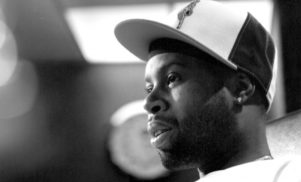Too often those most talented among us are taken away too soon.
Thankfully, we can always celebrate their lives and pay our dues that way. We can keep the memory alive through the art they leave behind. With modern musicians, this celebrating has increasingly involved monetising the art left behind, sometimes past the point of what is acceptable. As fans and consumers, where should we draw the line?
According to a Forbes article on top-earning dead celebrities in 2011, five of the 13 celebs listed were musicians, with the top spot going to Michael Jackson. It’s arguable that Michael Jackson or Elvis Presley stand as modern equivalents to the great classical composers – dead artists whose music was sufficiently impactful to live on for centuries. But the dead pop artist is now subject to new, unsavoury forms of posthumous celebration, of which duets from beyond the grave are just one macabre example.
Dead rappers are no exception to this rule. Tupac has had seven platinum albums since his death, and now he has a hologram – perhaps the most distasteful move yet in the annals of making money off a dead artist. As much as I’d like to think it can’t get worse, chances are we’ve only just begun to see, and hear, what the whole hologram idea can do for dead artists.
A week or so ago, Detroit producer and DJ Houseshoes recounted the following story on Twitter about the late James D. Yancey, aka Jay Dee: “Phat Kat told me that Jay said when he died he wanted to take ALL the music with him.” This got me thinking. The celebration, and monetisation, of Dilla’s estate has been a subject of much discussion in the years since his passing. While the man may not have had the public impact of a Michael Jackson or a Tupac Shakur in his lifetime, that doesn’t make his contribution to our collective understanding of what music is – and can be – any less important. In a case of hip hop history revisionism, it’s only in the years following Dilla’s death that his official output accrued the attention and credit it deserves.
What would have happened if Jay had taken all the music with him? Or Tupac, or Biggie, or any artist for that matter? What if estates and those in charge of the art of the dead weren’t able to monetise it the way they’ve been able to? I don’t think the world would be worse for it. For a start, we’d still have the art they left behind, which in most cases is what has the most worth culturally and artistically. Sure, Jay had troves of beats no one ever heard, but perhaps there was a reason for that – just as there was a reason certain Biggie or Pac rhymes ended up on the cutting floor and not on record.
I struggle to think of any posthumous release that really changes our understanding of an artist’s importance. They may add layers to a legacy if done properly, but those releases are exceptions, not the rule. The world we live in today is swamped with more art than we can possibly consume, a trend that shows little sign of abating. Instead of finding new ways to sell the legacy of a dead artist, we should be celebrating what they left behind and focusing on what’s ahead of us.






































